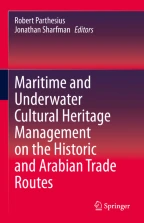
South Africa’s unique position, approximately the half-way point between Europe and the rich markets of the Indian Ocean and Far East, made it a key strategic location for the emerging western seafarers, traders and colonial powers who sought to control maritime commerce. As such, the nation’s waters are host to a broad range of shipwreck sites that represent the history and heritage of multiple states.
With the invention of SCUBA, the underwater environment and historic shipwreck sites became increasingly accessible. As wreck sites and their ancient historic cargoes were discovered and treasure hunters regaled the public with stories of adventure and hard-fought fortunes, archaeological sites came under increasing threat. Salvors, looters and souvenir hunters, interested only in commercially valuable objects, ran roughshod over archaeological sites in their efforts to recover the prizes hidden within. South Africa was not exempt from these endeavours and, as treasure hunting efforts increased in the 1970s and 1980s, it struggled to draft and implement management systems that would protect sites and retain historical and archaeological data. This chapter explores the development of South Africa’s MUCH legislation both within the context of the apartheid era and within the young, inclusive democracy that emerged in to mid-1990s. The chapter examines how reactive legislative frameworks favoured shipwreck heritage and how new approaches that take cognisance of alternative maritime heritage narratives are emerging to offer access and a voice to all South Africans.
This is a preview of subscription content, log in via an institution to check access.